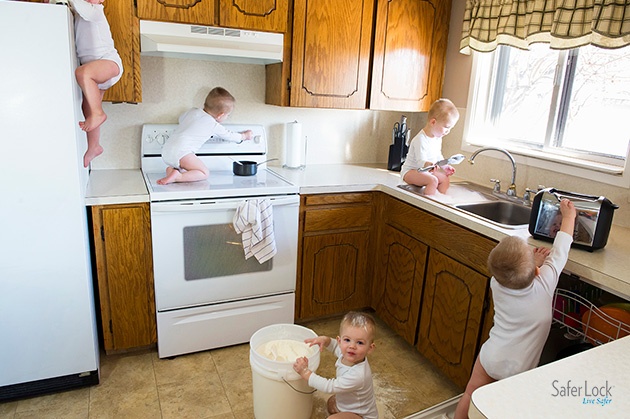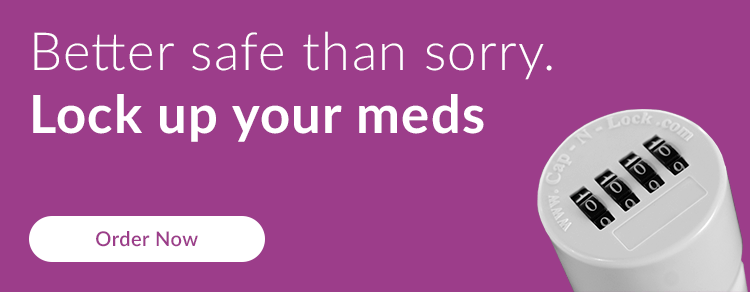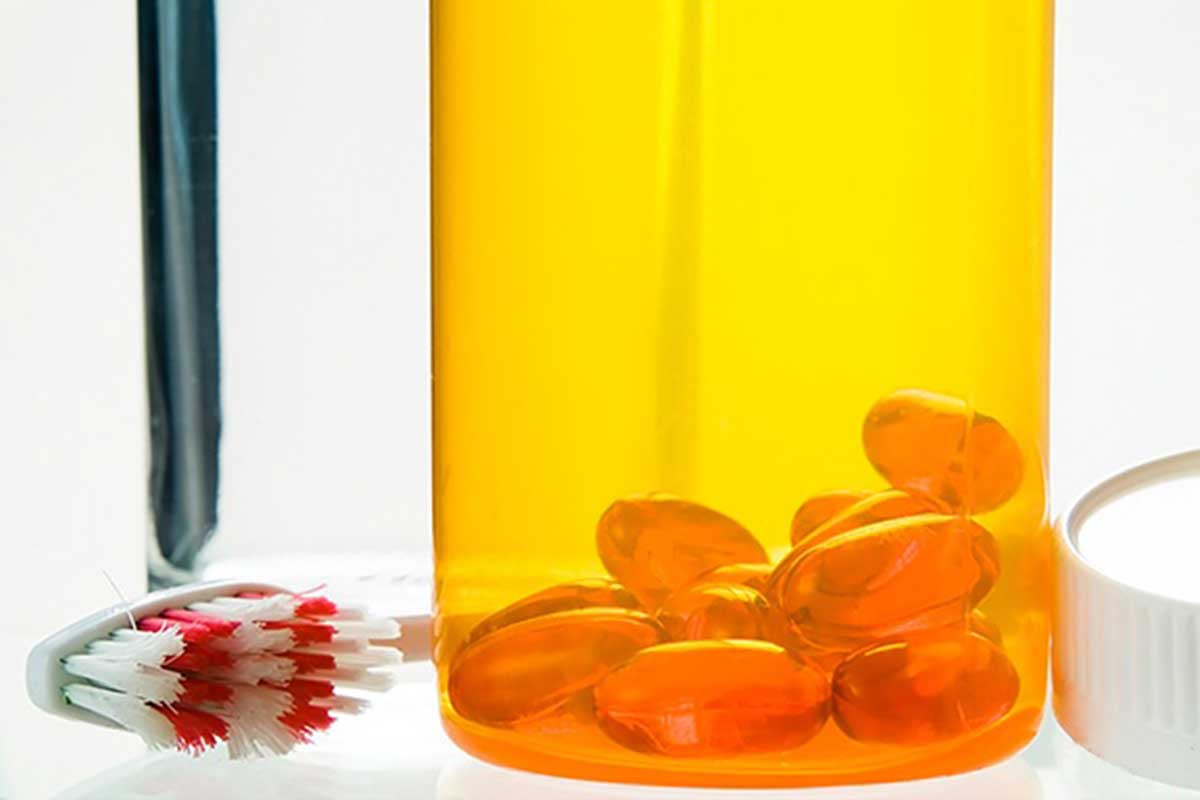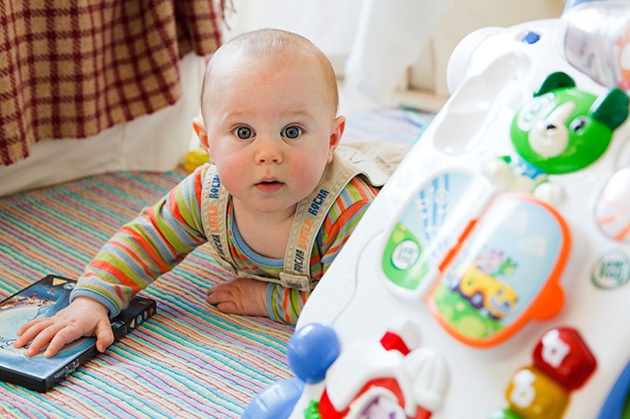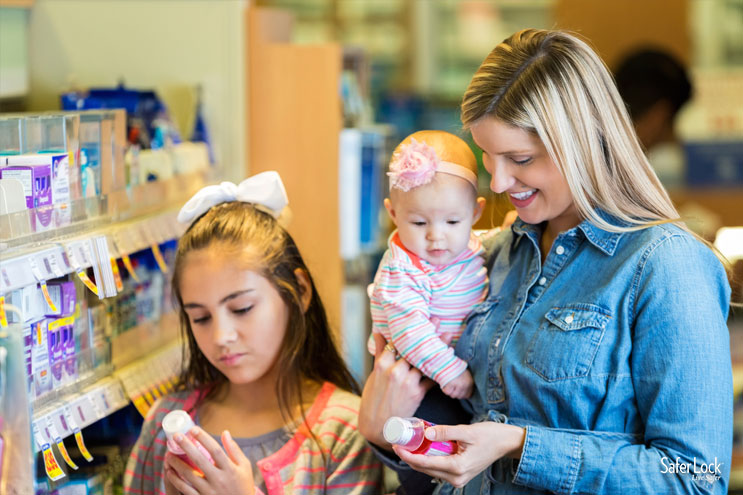Baby proofing your house is an essential part of being a good parent to a baby or small child. Before you start the baby proofing process, however, it helps to know some key statistics about baby safety by age group. This way, you can focus your baby proofing efforts on the areas where your child is most at risk in your home for their age.
Unintentional Poisoning is the #1 Leading Cause of Death
The CDC reports that unintentional poisoning is the leading cause of death amongst all age groups, from babies to adults over the age of 65.
You can help protect your babies and young children from accidental poisoning.
First, be sure that all cupboards, pantries, and doors that lead to poisonous substances and harmful chemicals are securely locked at all times with baby-proofing latches and locks. Cosmetics, cleaning supplies, insecticides, fertilizers, and herbicides should always be off limits to your young children.
Prescription pills, over-the-counter medicines, vitamins, and supplements should be placed out of sight and out of reach of infants and young children. In addition, they should always be secured in a locking medicine box or with a locking pill bottle.
Never ever leave pills in a purse, on a counter, or in a bedside table where a young child can find them.
Babies Under 1 Year of Age: Prevent Suffocation
The leading cause of unintentional death for babies less than a year old is suffocation. You can protect your infant by focusing baby safety efforts on his sleeping environment. Your baby will sleep from 14 to 18 hours a day the first year of his life. Be sure that his crib is free from pillows, stuffed animals, blankets, bumpers, or bedding that could cause accidental suffocation. One fitted-sheet pulled tightly onto a firm mattress is the only thing that should be in your baby’s crib.
Always remember to put baby to sleep on his back in his crib. Never put baby to sleep on the sofa; researchers have concluded that the sofa is an extremely hazardous sleep surface for infants.
Children Ages 1 - 4: Protect Against Drowning
The leading cause of unintentional death for children ages 1-4 is drowning. You can protect your young child from drowning by focusing on the bathtub, toilet, and water sources outside of your home.
A baby can drown in as little as 1” of water. Be vigilant at bathtime, fill the tub up with only 2”- 4” of water, and never leave your child’s side or take your eyes of them at anytime. Use toilet lid locks to prevent curious kids from lifting the lid, and place doorknob locks on bathroom doors.
Outside of the home, empty all tubs, buckets, wading pools, and containers immediately after use. Turn upside down to dry. If you have a pool outside, a four-sided isolation fence around it reduces a child’s chance of drowning 83% compared to three-sided property-line fencing. Be sure that all external doors are fitted with doorknob latches or kept locked at all times.
Children Ages 5 - 9: Practice Car Safety
Motor vehicle accidents are the leading cause of unintentional death for children ages 5 - 9. While there’s not a lot you can do to prevent other drivers from operating their vehicles recklessly, you can be sure that yours is as safe as possible.
You will not only need a car seat for your infant, you will also need safety seats or boosters until your child reaches age 12. The recommended age for children to remain in a forward facing car seat is one to seven, or when he reaches the manufacturer’s top height and weight recommendations. Once your child outgrows the child seat with harness, it’s time to move them to a booster seat.
Children should remain in the back seat at least until age 12. Always be aware of other drivers, never text or make calls while driving, and eliminate distractions inside the vehicle to make sure you are keeping your children safe while in the car.
You can help reduce the risk of an unfortunate, and preventable, accident happening to your baby or young child. As you babyproof your home, remember to put extra safeguards in place against child poisoning, suffocation, drowning, and car accidents. Every preventative measure you take now could keep your child safe for years to come.
